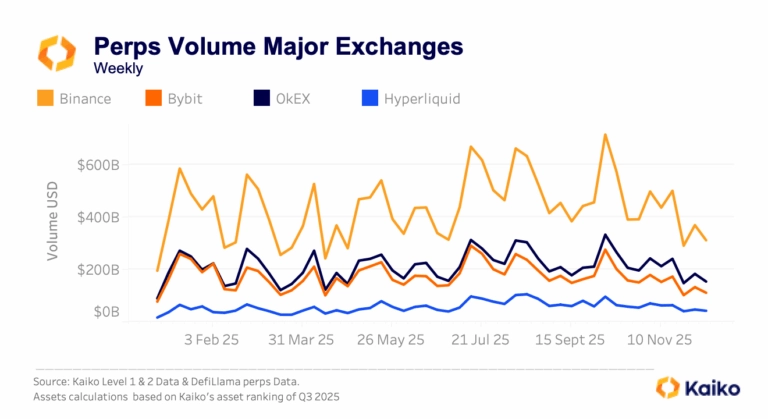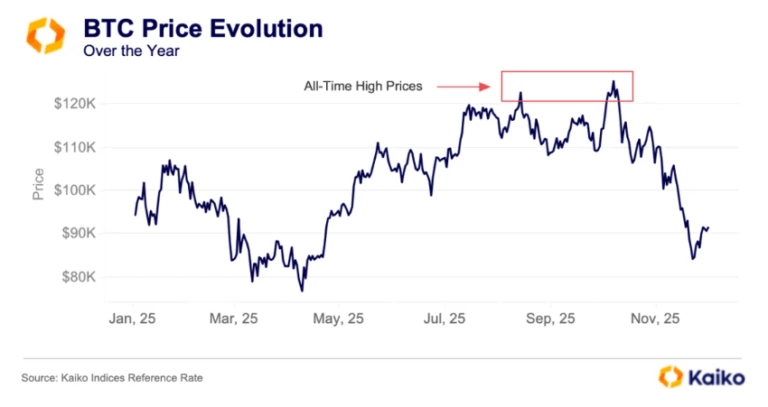V2
Users
The number of unique users for each protocol has declined steadily since May 2022; Compound’s decline in users has been more pronounced. The only months that have bucked this trend were November 2022 (when FTX collapsed) and March 2023 (when USDC depegged).
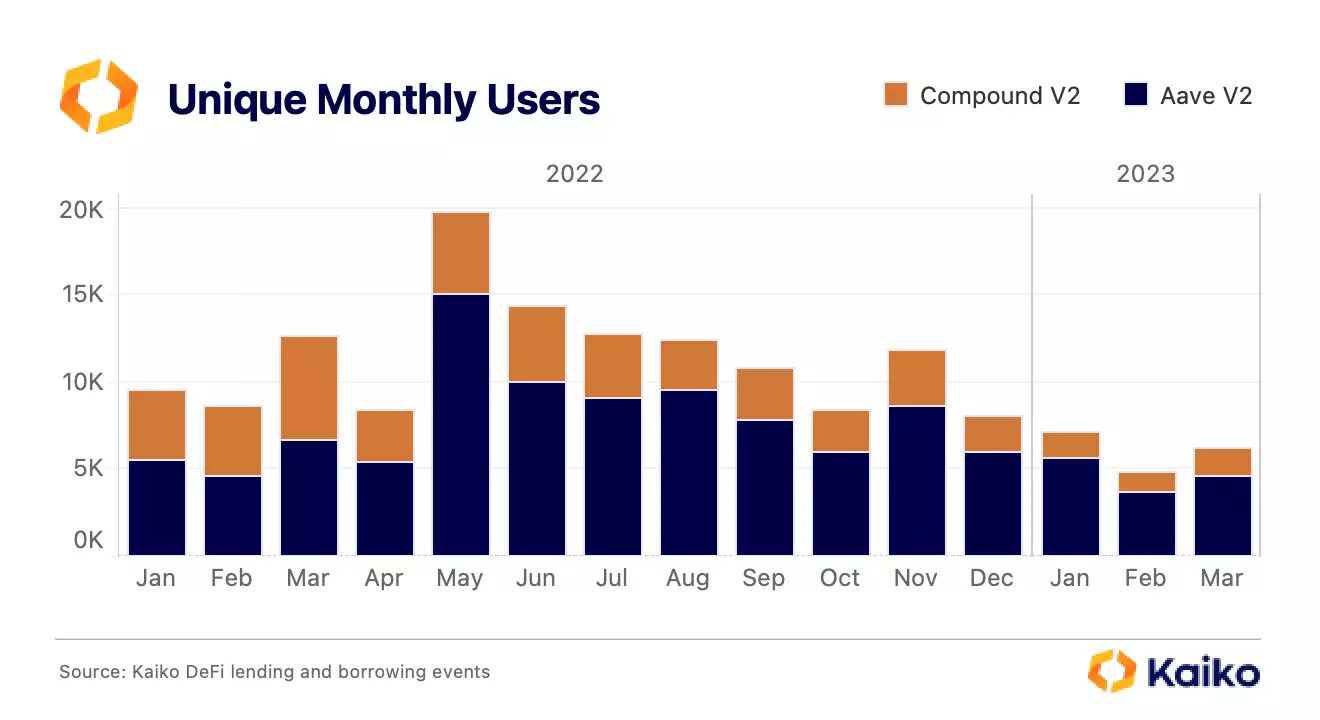
February 2023 was a particularly slow month, with just over 3,500 monthly users of Aave V2 and 1,000 of Compound V2. For reference, you are more likely to meet an active NFL player than you are to meet someone who used Compound V2 in February.
Deposits
Meanwhile, monthly deposit volume has been depressed since the bear market. Aave averaged around $8bn in monthly deposits at the beginning of 2022.
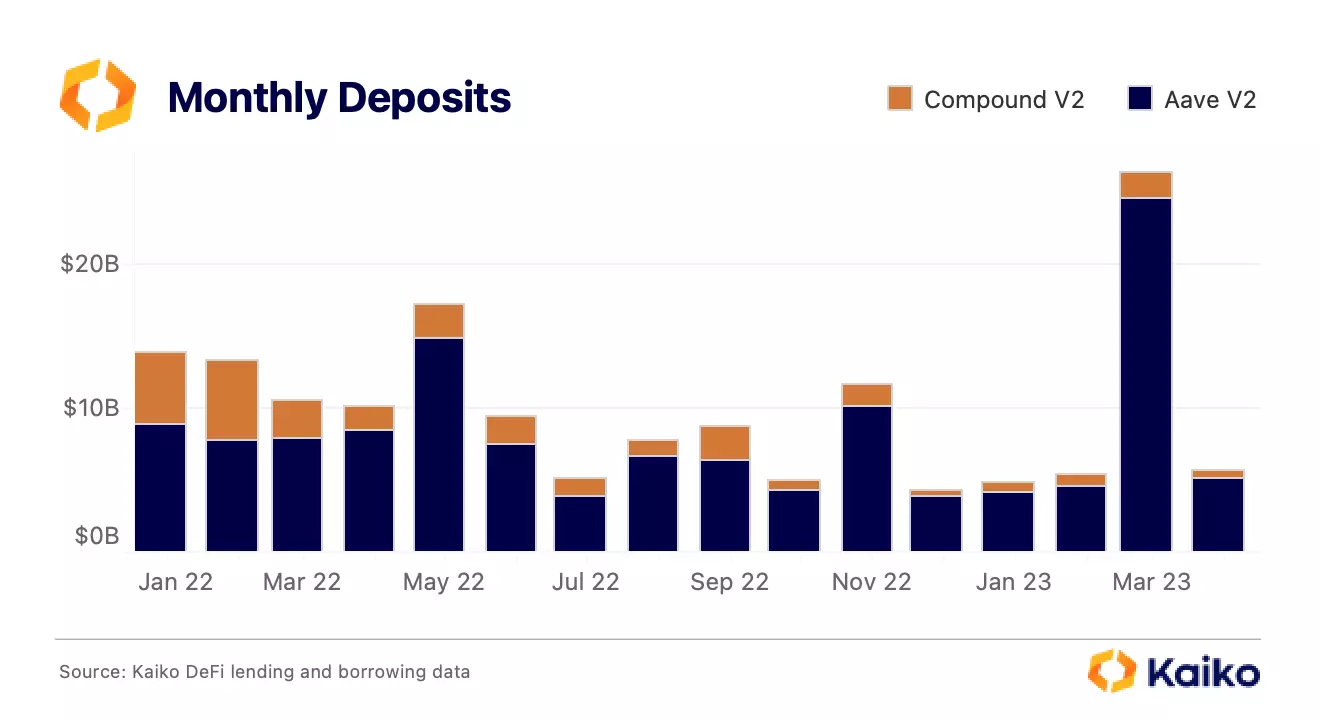
This year’s average has been about half that, approximately $4bn. The obvious exception of March, when flash loans – in which tokens are deposited and withdrawn in the same block – accounted for $10bn of deposits in just three days, which I’ve covered in more detail here. Like many things in DeFi, activity is driven by whales and bots. Since the start of April, just two addresses have been responsible for $3.4bn of Aave’s $5.1bn deposit volume: over 65%.
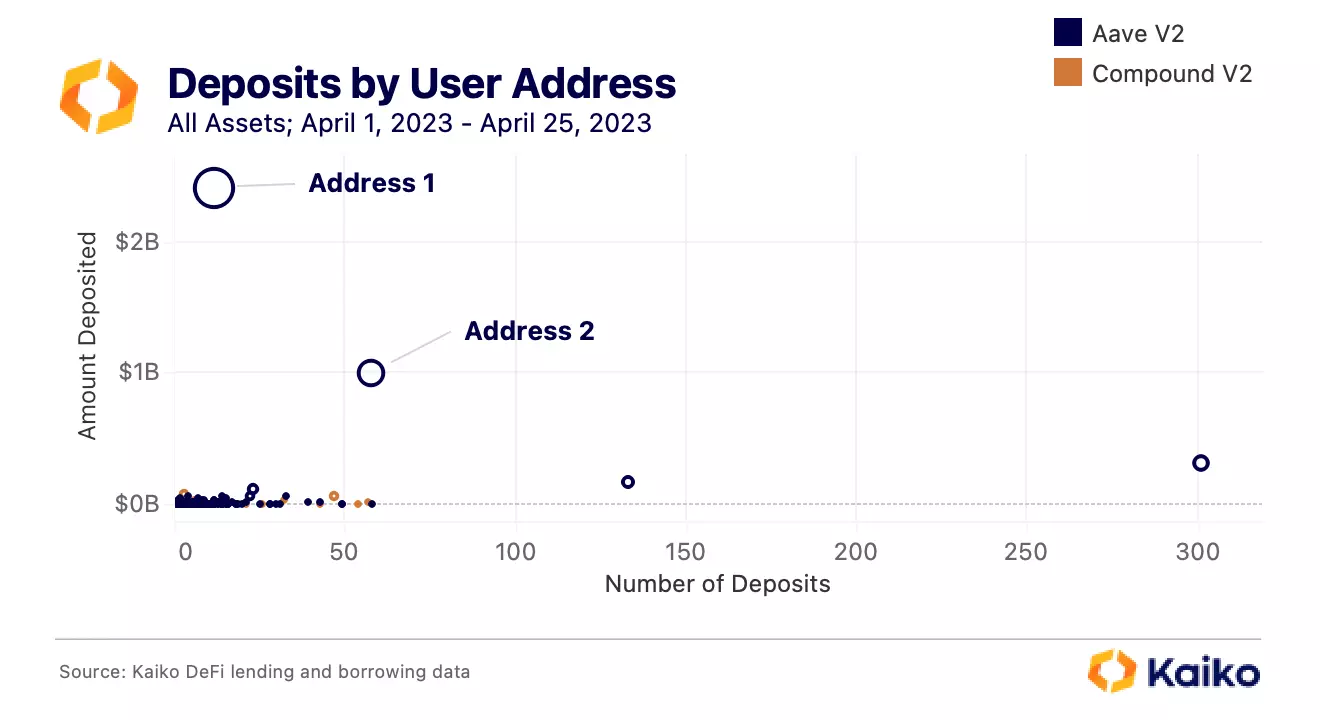
top users
This becomes even more interesting when examining the activity of these two addresses. The recent activity of these two addresses is charted below. Note that the address on the left has been active since April 2022 while the address on the right has been active since March 30, 2023.
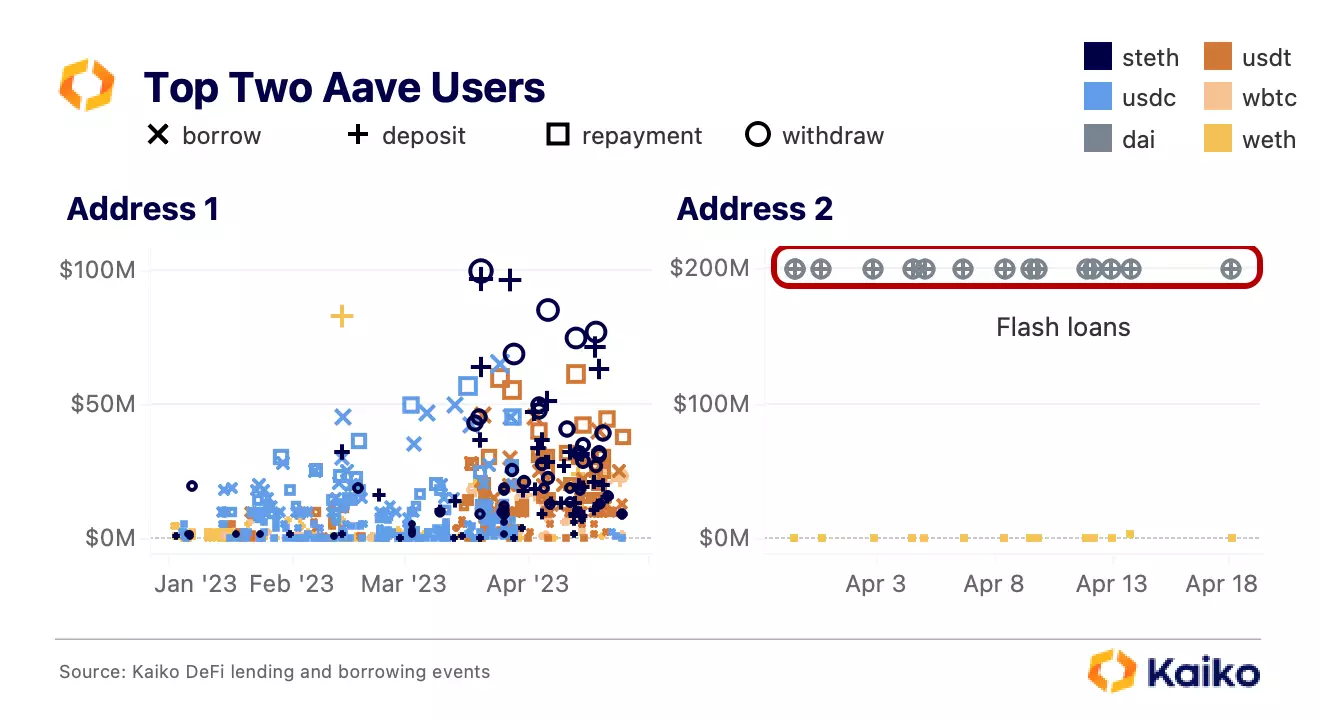
I had anticipated that both of these addresses would be bots, but it appears that the most active address is not: the activity looks organic and doesn’t have the simultaneous deposit and withdrawal that is the telltale sign of a flash loan. It’s also interesting to note that this account has largely shifted from borrowing USDC to borrowing USDT since mid-March, right after USDC depegged.
protocol Liquidity
While lending and borrowing events provide a nice view of who is using the protocols and how, snapshots of liquidity are helpful to get a broader picture of their status. Below is the total available liquidity (or sum of tokens deposited) on both Aave and Compound V2, split into stablecoins and non-stablecoins to mitigate the effect of price changes.
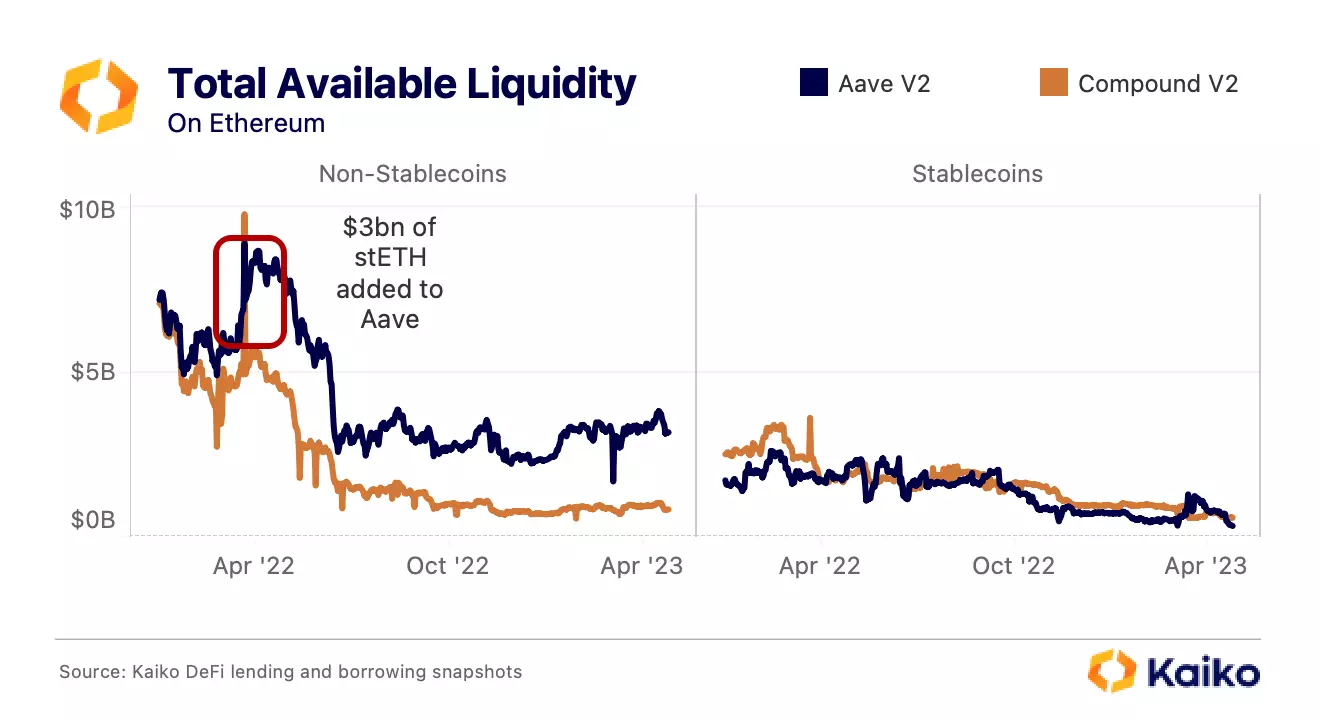
Both protocols have followed roughly the same pattern, shrinking significantly in both the stablecoin and non-stablecoin categories. Aave V2 made the savvy move to allow stETH deposits, which quickly netted it over $3bn of deposits in just a couple months, helping to explain the persistent gap between the two protocols.
Next, we can examine the total borrows on each protocol. Notably, there is no significant drop in either available liquidity above or borrows below since both protocols began rolling out their V3s at the end of last year.
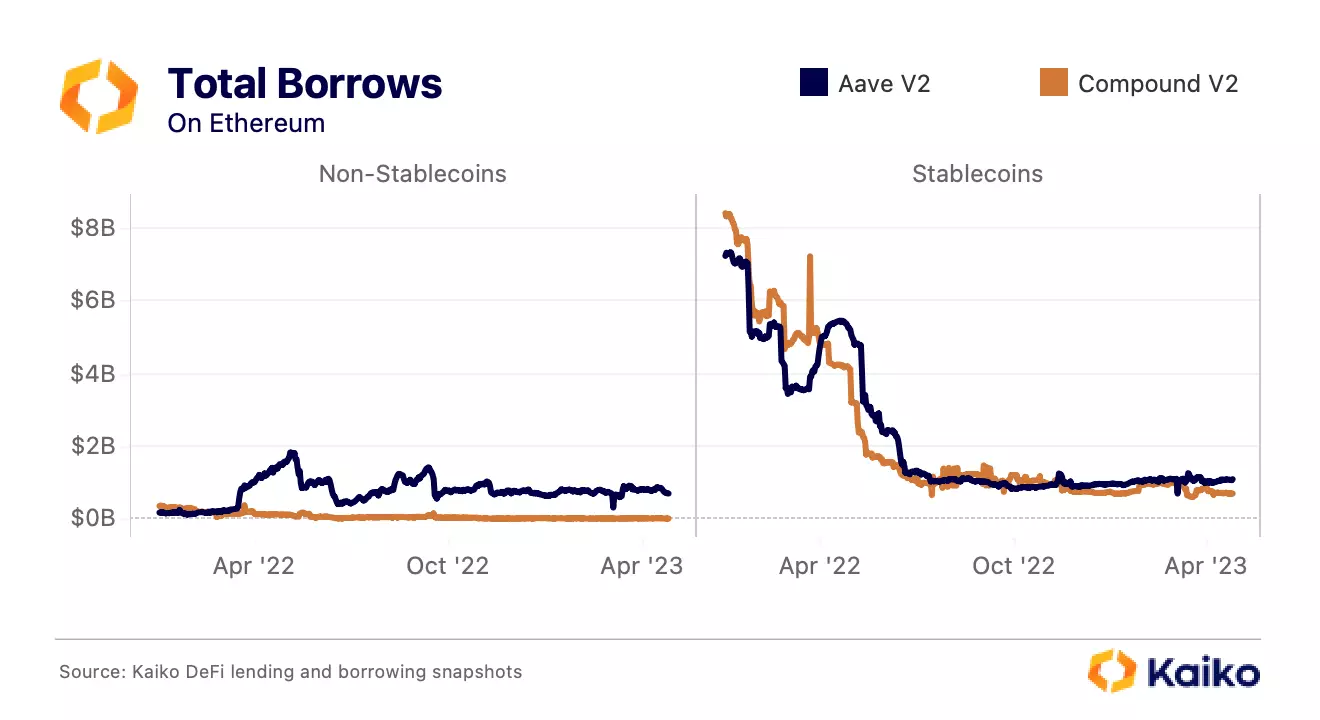
Compound’s lead in stablecoin borrows at the beginning of last year has evaporated, while Aave quickly expanded its lead in non-stablecoin borrows thanks to heavy ETH borrowing during the spring of 2022. A large portion of this was likely driven by users manually leveraging their stETH: depositing stETH, borrowing ETH, then staking it for stETH. This process can be repeated multiple times.
Currently, ETH is the most borrowed asset on Aave while DAI is the most borrowed on Compound. Meanwhile, stETH is the most deposited on Aave and ETH is the most deposited on Compound.


![]()
![]()
![]()
![]()












